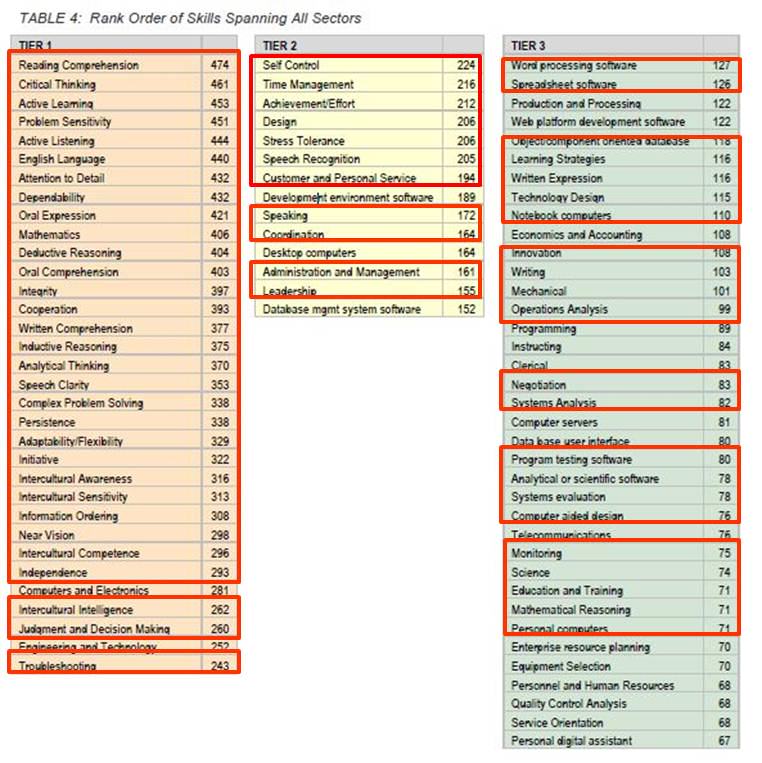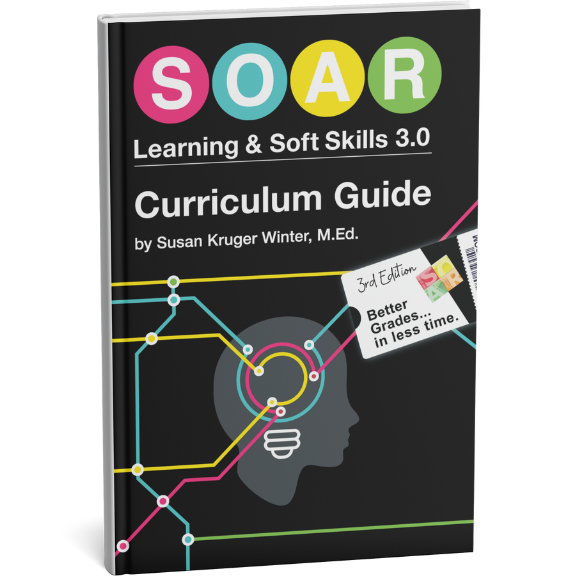Learning and Soft Skills Empower Special Education Students
Are we aiming to have our students “college ready” OR “career ready?”
OR both?
If both, do we get them “college ready” first, then “career ready?”
These are many of the questions that educators seem to wrestle with on a regular basis as our country works to prepare future generations for workplace success.
Let’s cut to the chase… The correct answer is preparing our students to be ready for middle school, high school, college AND career. Because the skill set is EXACTLY the same for all.
Right now, U.S. Businesses (large and small) are getting very worried for the future? Why? It’s not the economy. It’s not China taking over the world. It’s not a lack of technology. It’s the lack of a high-performing workforce.
You might think “well, it’s a good thing that more students than ever are going to college!” However, the problem is not about a lack of technical skills (i.e. engineering, business, medicine training).
The problem is a lack of SOFT SKILLS (i.e. problem solving, critical thinking, communication, organization, etc.).
Oakland County, MI is leading the nation with its research into what skills the future workforce will need. Their Skills Needs Assessment surveyed 500 businesses in emerging sectors and discovered exactly what skills employers are seeking.
The assessment revealed that 91% of the top needed skills are soft skills, NOT the technical skills that we’re striving so hard for our students learn in college. Below are the skills identified in the assessment. The one’s circled in red are soft skills.
The origin of our problem is “preparing students for college.” College is a process of being exposed to lots of new information. Students learn (but, really memorize) that new information. Then, students demonstrating proficiency of that information via a multiple-choice test. This process leaves our college graduates entering the workforce, prepared to handle multiple-choice problems. Employers are frustrated because the problems their businesses face on a daily basis do not present themselves in the form of multiple choice. Hence, conflict occurs between what employers need from employees and what employees have actually been trained to do.
The problem is further compounded at the middle and high school level. We actively train our students to be “college ready.” We expose students to new information. We help them learn (memorize) that information. Then, students demonstrate proficiency of the information via a multiple-choice tests. If the students do well on the multiple-choice tests (i.e. ACT/SAT), and thus get accepted to college, we call that a win!
However, our students are still unable to attack real world problems. They are far from being “career ready.”
Wipe the slate clean and allow me to propose a completely different solution…
This solution is powerful, yet simple. It benefits students in all subject areas, yet is relatively inexpensive. It prepares students for success in middle school, high school, college, and careers, and can be introduced as early as 6th grade. So, what is the solution?
Teaching strategic learning and soft skills. It sounds so easy and simple. It almost doesn’t sound like it would work. However, the opposite is the case.
Strategic learning and soft skills are concepts like organizational skills, time management, communication skills, critical thinking, problem solving, etc. When we deliberately teach students these skills, students actually “learn” versus memorize information. The end result is much higher performances on all forms of assessments.
Part of teaching effective learning and soft skills is teaching students to be strategic. If students are strategic with their approach to the learning process, they are engaging higher-level thinking skills. Meaning, they are actually thinking critically and problem solving while they are learning.
It goes something like this… Starting in 6th grade, we teach students strategic learning and soft skills. Students begin to think critically about their approach to learning while applying their newly learned skills in every subject. As a result, they become confident and successful learners in middle school. They continue to carry these skills through high school and college. When students enter the workplace, they automatically have the soft skills that employers are seeking, because the students have been employing these skills since age 11.
The Secret Weapon of Special Education
Special Education is poised to begin outperforming General Education. Yes, you read that last sentence correctly. There is a growing trend in Special Education to teach learning and soft skills (aka study skills).
The belief is that teaching these skills will help struggling students to perform closer to that of general education students. However, when taught properly, these skills are helping special education students to surpass and outperform general education students. This is actually nothing new. Maria Montessori did the very same thing over 100 years ago (See “How to Transcend All Barriers to Education”)
Special education students who can learn about how their brain works and how to use strategic learning and soft skills, can work around many of their apparent “disabilities.”
Meanwhile, general education students are still relying on their strong, working memory skills to help them “memorize” their way through course work and assessments. However, it will catch up with them.
We all know of people in our lives that are very successful as adults, but struggled desperately though school as a child. Sometimes, we say they’re very “street smart”, but were not very “book smart.” Street Smart is really just exhibiting strong soft skills (i.e. critical thinking, problem solving, etc.).
The writing is “on the wall” from employers… We need employees with soft skills and “street smarts.” Long gone are the days where “book smarts” were king. Yet, the majority of our general education system is striving hard to churn out “book smart/college ready” students.
So, the winners at the end of the day are going to be the special education students that were trained in strategic learning and soft skills. These are the individuals that employers will be seeking out, hiring, and paying high wages. Employers will NOT be seeking out the individuals with the 3.8 GPA due solely to “book smarts.”
The sad part is that there doesn’t have to be “winners” and “losers.” ALL students could be taught strategic learning and soft skills AND be ready for both college and/or career right out of high school.
To learn more about how you can start teaching strategic learning and soft skills to your students, click HERE to learn about SOAR® Learning & Soft Skills.
The results speak for themselves. On average, students using SOAR® Learning & Soft Skills see an increase in GPA of +1.0, a 30% reduction in missing assignments, and a 20% increase in confidence and motivation in school.
Don’t delay, get started today, click here.
Sincerely,
Brian Winter, M.Ed.
Co-Author, SOAR Social-Emotional Learning Skills
Six Steps
Conquer the Chaos
Get Our Free Guide & Information on...

"*" indicates required fields
Get Our FREE Curriculum Guide!
The SOAR® Curriculum
The most critical learning, organizing, and communication skills needed for school. Learn more here.
Who’s Using SOAR®?
SOAR® Guarantee
Click here to learn more.






